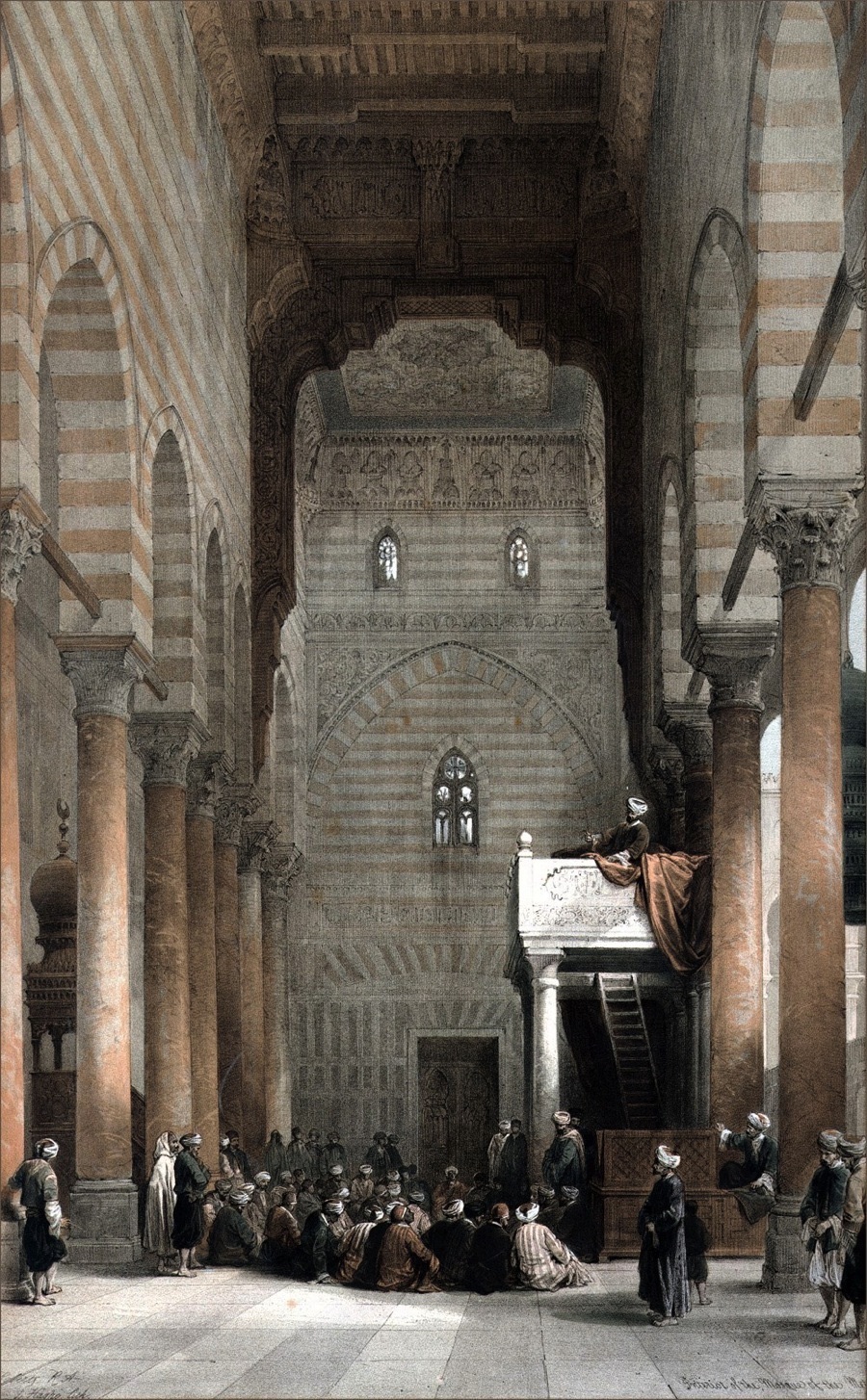INTERIOR OF THE MOSQUE OF THE METWALYS
ON entering many of the mosques of Cairo, and particularly that of the Metwalys, the traveller observes the elegance and lightness of character which prevail in their construction, and the effect produced by the springing of the arches from the columns. That most striking change in architecture, which appears to have commenced in Byzantium, became Arabic or Saracenic in the East, and, as it advanced to the West, became the Gothic of later period. Its origin in Byzantium may be traced to the remains of those Græco-Roman edifices which the Arabs adapted to their religious structures, as we now see them. Columns of various heights, the materials and relics of earlier Roman temples, were everywhere pressed into a new service and for another worship, and their remains became part of the Basilica, the Mosque, or the Cathedral.
Those who have visited Rome will be reminded, on seeing this view of the interior of the Mosque of the Metwalys, of St. John Lateran, Sta. Maria Maggiore, and other churches, constructed with similar materials furnished by the ruins of Ancient Rome. Marble columns of every variety, and capitals of various forms and dimensions offered to the Arab architects the ready means of supporting the roofs of their religious buildings. Spain, which they conquered, furnishes similar examples: the great mosque of Cordova contains above eight hundred columns, which were removed not only from Roman temples in Spain but from the ruins of Carthage, and transported thence by the Moors as a readier means of obtaining them than by quarrying the columns from the rocks. Wherever the Moslems raised the temples, the principles of construction common with the Byzantines were observed,- columns supporting arches, generally pointed, but often with more than half the circle forming the arch; sometimes with many lobes, but all partaking of that peculiar character so commonly observed in the Moorish remains in Spain and of the Arabs in Egypt, and distinguished by us as the Saracenic. When those were adopted in Christian countries, order grew out of the earliest and rudest arrangements; until at length our Norman and English Gothic, thus springing from the ruins of the Lower Empire, became established by laws of structure, as certain as the principles which governed the construction of the temples of the Greeks.
The Arabs who were forbidden by Mahomed, as the Jews had been by Moses, to make any image which bore resemblance to any living thing, sought by beautiful lines and forms and colours to decorate their temples: whence, in the extraordinary fertility of their invention, their architecture has been enriched with a redundancy of those forms and colours of infinite variety and beauty, and become what we understand by the term- Arabesque.
A covering from the fervid sun, a fountain whereat to make the ablutions commanded by their Prophet, and a deep recess in the side towards Mecca, are the essentials of a mosque. The building is generally an oblong square inclosed by walls, and surrounded by open porticoes; sometimes the court of the square is planted with trees, but more frequently laid with slabs; in the centre is the fountain: from the court, the naves of the mosques as they extend themselves are supported by walls, which contain many openings, the largest and principal opposite to the Mihrab, or Mechráb; the part the most decorated, often with fine stones, pearl and ivory: towards the east is the Kiblah, placed exactly in the direction of the Kaaba of Mecca, to which every Mussulman turns in praying. Within the sanctuary and inclosed by railing is the Mimbar, which is elevated and often much enriched: from it the Imam, or preacher before whom is placed a large copy of the Koran, reads and expounds it to the faithful by whom he is surrounded.


